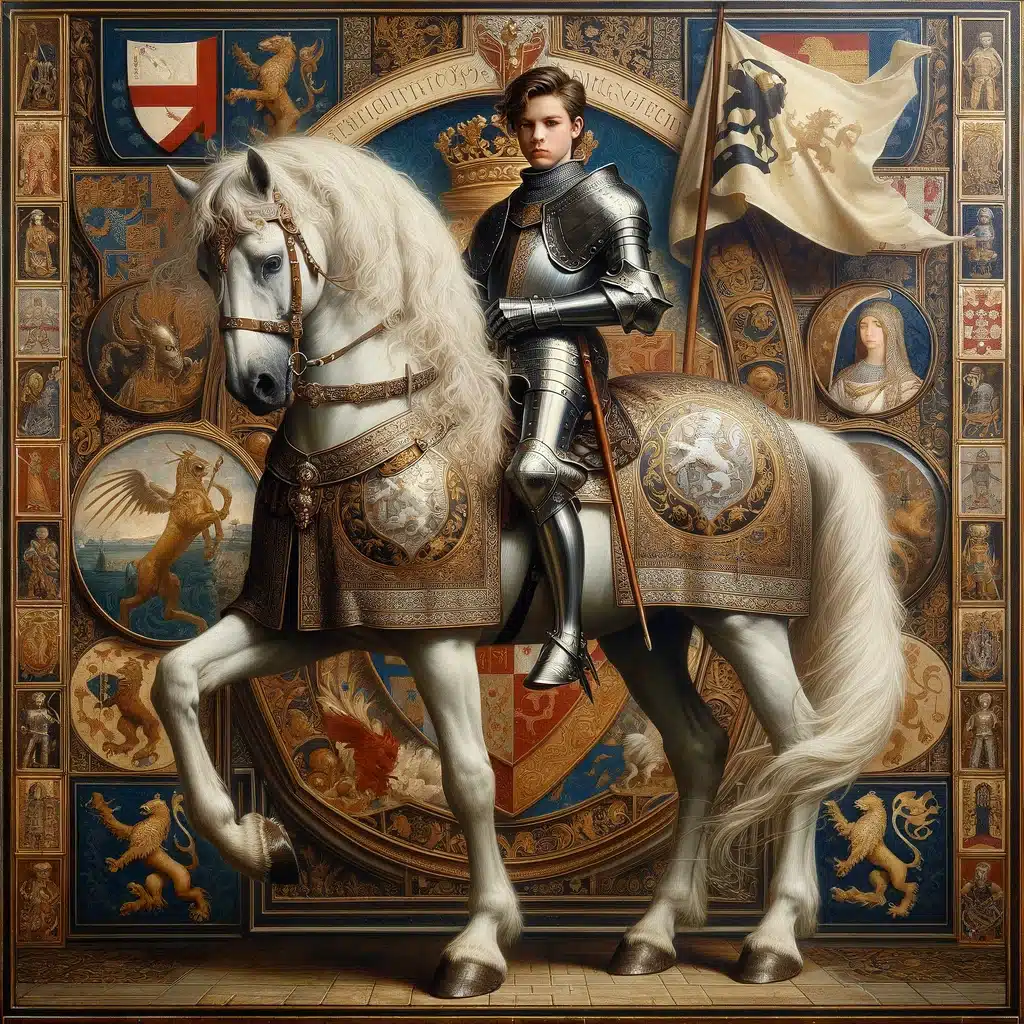The enduring bond between many ancient French families, including our own, and the twin pillars of Christianity, the Catholic and Orthodox Churches, is a tale woven through the tapestry of history, faith, and cultural identity. This relationship is not just a matter of religious affiliation, but a profound connection that has shaped the family’s heritage, traditions, and worldview across centuries.
Historical Roots
The story begins in the medieval period, a time when the Catholic Church was at the heart of European life. In France, Catholicism was not merely a religion but the cornerstone of social order, art, and education. An ancient French family, deeply embedded in this milieu, would have seen their faith as an integral part of their identity. The family’s attachment to the Catholic Church can be traced through their participation in religious ceremonies, patronage of church art and architecture, and adherence to Catholic teachings and practices.
The Schism and Beyond
The Great Schism of 1054, which split Christianity into Western (Catholic) and Eastern (Orthodox) branches, might seem like a division too vast for any family to bridge. However, the geographical and cultural proximity of France to the Byzantine Empire, through trade and the Crusades, facilitated exchanges that would later influence familial religious affiliations. Some members of the family, through diplomatic marriages or personal conversions, might have found themselves drawn to the Orthodox faith, appreciating its liturgy, theology, and the mystique of the Eastern Christian tradition.
Cultural and Spiritual Synthesis
For the family, attachment to both the Catholic and Orthodox Churches became a unique synthesis of Western and Eastern Christian traditions. This duality is reflected in their art, where one might find the Gothic architecture of the family’s ancestral home adorned with Byzantine icons. Similarly, their religious observances might combine the solemnity of the Catholic Mass with the incense and chants of the Orthodox Divine Liturgy.
Modern Relevance
In contemporary times, this dual religious heritage continues to be relevant. It serves as a bridge between communities, fostering dialogue and understanding between Catholic and Orthodox believers. The family’s unique position allows them to participate in ecumenical movements aimed at reconciling the two traditions, highlighting their shared roots and mutual respect.
Legacy and Identity
The ancient French family’s attachment to both the Catholic and Orthodox Churches is more than a historical footnote; it is a living testament to the power of faith to transcend boundaries and unite disparate elements. This legacy is not confined to religious observance but permeates the family’s cultural, ethical, and social outlook. It informs their understanding of justice, their commitment to community service, and their appreciation for the sacredness of art and beauty.
Conclusion
The story of an ancient French family’s attachment to both the Catholic and Orthodox Churches is a narrative of faith, heritage, and the enduring quest for spiritual unity. It illustrates how deeply held beliefs can shape a family’s identity over centuries, influencing not only their religious practices but also their contributions to culture and society. In a world often divided by differences, this family’s journey is a reminder of the potential for faith to bridge divides and enrich our collective human experience.














